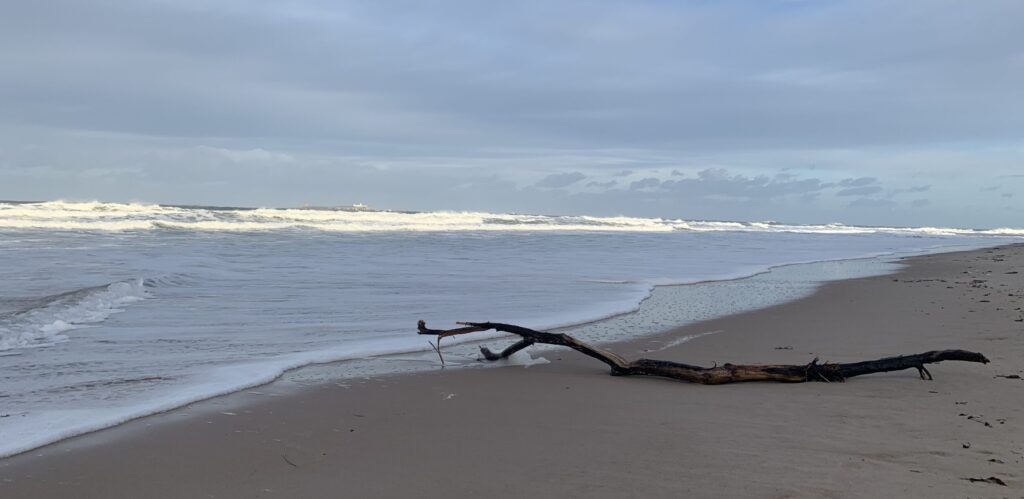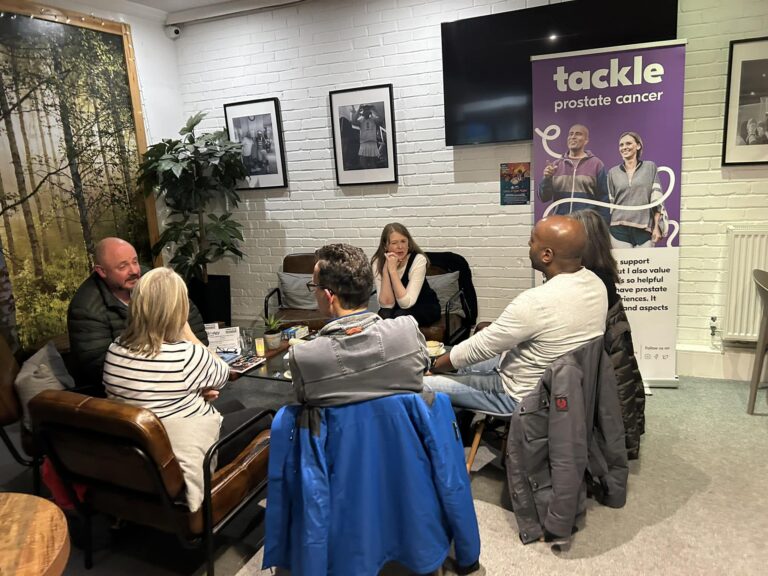You may have heard about the STAMPEDE (Systemic Therapy in Advancing or Metastatic Prostate Cancer: Evaluation of Drug Efficacy) trial. If not, it is a large clinical trial that aims to assess new treatment approaches for people affected by high-risk prostate cancer.
The trial has tested many different ways of treating prostate cancer and some results are now already known. Each new or alternative treatment has been compared with the current standard approach. Almost 12,000 participants joined the trial, with answers becoming available throughout the trial as information on life expectancy and disease control rates were gathered and compared.
Dafydd Charles, Group Leader from the Oxfordshire Prostate Cancer Support Group, was put forward for the STAMPEDE trial in 2018, here is his experience:
My story starts in October 2017, when I had just turned 60. I retired a few months previously and was looking forward to spending more time travelling, and walking, both up hills and mountains, and tackling more long-distance routes in the UK and abroad. I had managed to complete just under a half of the coast of Wales at this point (which is 870 miles in total), and was hoping to polish off the rest in good order now that I had much more time on my hands.
To give you a bit of a background, my dad, who was in his mid-eighties at the time, had been diagnosed with prostate cancer about 6 years previously. As I was aware even then that a diagnosis of prostate cancer in a close male relative was relevant to my own risk, I had requested a consultation with my own GP. My physical exam turned out to be normal, and after the advantages and drawbacks of my having a PSA test were explained to me (even though I was in my fifties at the time), I decided not to go ahead with the blood test. I guess I was scared of being drawn into all the dilemmas that might come along if my PSA reading was slightly higher than what was regarded as ‘normal’.
Fast forward now back to 2017, and during a fairly routine session with my physiotherapist, she suggested that I make an appointment with my GP for a general chat about ‘men’s health’, ostensibly as a ‘box-ticking’ exercise. I had no symptoms of prostate cancer that could be regarded as suspicious, such as aches and pains in my legs or back, or problems with my urination, so I was happy to go along with her advice, which she said she had offered as she regarded herself as a member of my wider healthcare team. I didn’t know it then, but this was the most important advice on my health that anyone had ever given me. (Thanks, Jane!) A few months later I visited my GP. He detected that my prostate felt abnormal, and this time positively encouraged me to have a PSA test, which of course I did.
My PSA was found to be raised (just over 12) and following follow-on diagnostic tests, I was found to have an aggressive prostate cancer (Gleason 9), with two tumours in my prostate. Furthermore, an MRI scan revealed that one of the tumours may well had grown through the ‘skin’ of my prostate. What a great way to start my retirement, I thought.
Following the customary consultations with a surgeon and oncologist, I opted for surgery, partly as I wanted to feel that ‘the cancer has gone’. I was aware that a prostatectomy was a major procedure, and in very many ways tougher than the alternative of radiotherapy and hormone treatment. As one of the tumours was very close to, or beyond, the edge of my prostate, my surgeon removed about a dozen neighbouring lymph nodes to check whether the cancer had already spread beyond the gland itself. The bad news came back – I had three nodes near my prostate which harboured secondary tumours. The good news, though, was that my prostate (together with some surrounding tissue directly over the tumour) was removed with clear margins, and a bone marrow MRI failed to detect any secondaries in my spine, pelvis, hips or ribs.
That could have been it, but over the next few months my PSA, which had had actually failed to fall as far after surgery as would be expected, started to rise significantly. Over that summer my PSA tripled over about three months, reaching a value of nearly two by early autumn. I then had a PET scan to see where the additional cancer was hiding, and remember my consultant telling me that this showed I had significant ‘residual disease’. Six further tumours in lymph nodes had been found within, and beyond my pelvis.
The Multi Disciplinary Team looked at my case and decided that as I was a relatively young man (at that time, anyway!) who had an aggressive disease that was clearly growing and possibly also spreading rapidly (witness the rapid increase in my PSA), my forward treatment should follow the conclusions of the STAMPEDE1 Trial of treatments for this and other, more advanced forms of prostate cancer.
The guidance was as follows: I would need to start hormone treatment immediately, have chemotherapy (over four and a half months) and then within about six months or so, radical pelvic radiotherapy (over six and a half weeks). Paradoxically perhaps, I was actually relieved to receive this news, and showed it, which I think rather confused my consultant. I explained that as I had endured a few months of gnawing uncertainty concerning my situation at this time, knowing what I now faced at last was actually a big relief for me.
I duly started hormone treatment and researched how I could best weather my way through the rest of my treatment. As my ‘positive’ lymph nodes were widely spread within my abdomen and some were in locations that could lead me to being significantly harmed if they were treated in the normal way with external beam radiotherapy, it looked at one stage that I wouldn’t be able to have the final component of my initially recommended treatments. This was very worrying to me as I remember being told that the radiotherapy would effectively be the curative step of the whole process, as in my case chemotherapy would probably not be capable of destroying all my cancer on its own. Fortunately, this issue was subsequently resolved, and after an in-depth review, pelvic radiotherapy was reinstated on my treatment plan.
In the original explanation to me of my treatments following my surgery, I had been told that the rationale underlying STAMPEDE as applied to cases like mine was a partial departure from what I had been told was previous practice. Many years ago, a man with disease that had spread significantly beyond the prostate would be given hormone therapy to manage the cancer as best as it could. If (or rather, when) this failed to keep the cancer in check, chemotherapy would be used, and so on.
With STAMPEDE, hormone treatment, chemotherapy and then radiotherapy would be applied in relatively quick succession. Recent outcomes for the men who had been judged suitable for this sort of punishing treatment supported the view that it appeared to be better at tackling the cancer, and even held out the promise of a complete cure. In any case, the approach did look as if it was superior to the previous, more graded approach. I thought of it as ‘throwing the entire kitchen sink’ at the cancer, or ‘Shock and Awe’, or a combination of precision and saturation bombing, metaphors that my consultant agreed were not far off the mark!
I completed my radiotherapy in the summer of 2019, and my hormone treatment (which I had been on since 2018) in 2020. My PSA fell from a value of two (see earlier) to zero during my chemotherapy and thankfully it has been there ever since.
At this point, and not surprisingly, I have a range of feelings. Clearly, I’m delighted that my treatments seemed to have worked (fingers crossed), even though scans revealed I was probably hosting about eleven tumours just before diagnosis. I feel incredibly lucky that it took my physiotherapist to suggest that I should get checked, even though I had no symptoms. As it turned out, I understand I was close to the point where my cancer would be incurable, and although the situation is a source of worry for my two sons, who are now young adults, at least my experience will serve as a stark warning to them to be especially aware of their own risk. I for one will certainly be reminding them to be vigilant…!!‘



